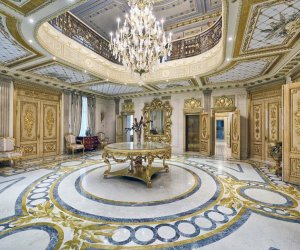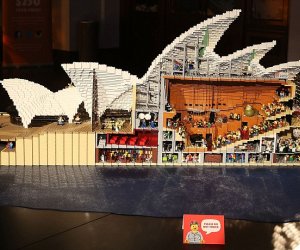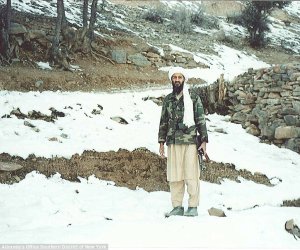World's biggest collector of Nazi memorabilia has £100million haul

When he was five, Kevin Wheatcroft received an unusual birthday present from his parents: a bullet-pocked SS stormtrooper’s helmet. He had requested it especially.
The next year, at a car auction in Monte Carlo, he asked his multi-millionaire father for a Mercedes: the G4 that Hitler rode into the Sudetenland in 1938. Tom Wheatcroft refused to buy it and his son cried all the way home.
Kevin Wheatcroft is now 55, and according to the Sunday Times Rich List, worth £120 million. He lives in Leicestershire, where he looks after his late father’s property portfolio and oversees the management of Donington Park Racetrack and motor museum (which he also owns).
The ruling passion of his life, though, is what he calls the Wheatcroft Collection — widely regarded as the world’s largest accumulation of German military vehicles and Nazi memorabilia.
The collection has largely been kept private, under heavy guard, in industrial buildings Wheatcroft owns near Market Harborough, or at his homes in Leicestershire, south-west France and south-west Germany. There is no official valuation, but some estimates put the worth at more than £100 million.
Among the internet tribes of World War II enthusiasts, the Wheatcroft Collection is spoken about as a near-mythical trove. Now he is guardedly opening it up to a wider audience, launching a rather creaky website and putting a handful of vehicles on display at his motor museum.
Wheatcroft’s father, Tom, a building site worker from Castle Donington, returned from World War II a hero. He also came back with a wife, Wheatcroft’s mother, Lenchen, whom he had first seen from a tank turret as he pulled into her village in Lower Saxony.
Tom, who died in 2009, made millions in the post-war building boom, then spent the rest of his life indulging his zeal for motor cars.
Exact figures are hard to come by, but the annual global turnover of the market for Nazi memorabilia is estimated to be in excess of £30 million. The trade is either banned or strictly regulated in Germany, France, Austria, Israel and Hungary. No major auction house will handle Nazi memorabilia and neither will eBay.
Still, the business flourishes, with interest from buyers in Russia, America and the Middle East.
When I went to see the collection, Wheatcroft met me off the train at Market Harborough. ‘I want people to see this stuff,’ he told me. ‘There’s no better way to understand history. But I’m only one man and there’s so much of it.’
He recently purchased two more barns and a dozen shipping containers to house his collection. As we made our way into the first warehouse, he stood back for a moment, as if shocked by the scale of it all.
‘Every object has a story,’ Wheatcroft told me as we stepped over U-boat torpedoes and V2 rockets. He owns a squadron of 88 tanks — more than the Danish and Belgian armies combined. We stood beside a Panzer IV, patched with rust and freckled with bullet holes.
Wheatcroft scratched at the paintwork to reveal layers of colour: its current livery, the duck-egg blue of Christian Phalangists from the Lebanese civil war, the green of the Czech army who used the vehicles in the Sixties, and finally the original German taupe. The tank was abandoned in the Sinai desert until he shipped it home to Leicestershire. The value of his machines is dazzling. ‘The Panzer IV cost me $25,000. I’ve been offered two-and-a-half million for it.’
Trying to work out the value of the objects around me, I gave up somewhere north of £50 million. Wheatcroft has made a fortune, almost without realising it. ‘Everyone assumes I’m a spoilt rich kid who wants to indulge in these toys,’ he said. ‘It’s not like that at all. My dad supported me, but only when I could prove that the collection would work financially.’
In one of the warehouses, I spotted a dark wooden door, heavy iron bolts on one side.
‘That’s the door to Hitler’s cell in Landsberg Prison,’ he said. ‘Where he wrote Mein Kampf. I was in the area when the prison was being pulled down. I drove there, parked and watched the demolition.
‘At lunch, I followed the builders to the pub and bought them a round. I did it three days in a row and by the end I drove off with the door, some bricks and the iron bars from his cell.’
Near the door sat a trio of rusty wine racks. ‘They were Hitler’s. We pulled them out of the ruins of the Berghof [Hitler’s home in Berchtesgaden] in May 1989. The place was dynamited in ’52, but my friend and I climbed through the ruins of the garage and down air vents to get in.’
Later, I came across a massive bust of Hitler. ‘I have the largest collection of Hitler heads in the world,’ he said. ‘This one came from a ruined castle in Austria. I bought it from the town council.’
Wheatcroft’s huge, modern home sits behind high walls and heavy gates. A Krupp submarine deck gun stands sentry outside the back door. One outer wall is set with maroon half-moons of iron work, inlaid with runic symbols.
‘They were from the officers’ gates to Buchenwald [concentration camp],’ he told me in an offhand manner. ‘I’ve got replica gates to Auschwitz — [embellished with the words, Work Brings Freedom] Arbeit Macht Frei — over there.’
The immense, two-storey barn conversion behind his house wore fresh paint and shiny new locks. ‘I have to have strict rules,’ he said, ‘I don’t show many people the collection, because not many can understand the motives behind it, people don’t understand my values.’ He kept making tentative passes at the stigma attached to his obsession, as if baffled by those who might find his collection distasteful, yet desperately keen to defend himself, and it.
The lower level housed the Mercedes G4 that Wheatcroft saw as a child in Monaco. ‘I cried and cried because my dad wouldn’t buy me this car. Now, almost 50 years later, I’ve finally got it.’
Upstairs, in a long, gabled hall were dozens of mannequins in Nazi uniform — Hitler Youth, SS officers, Wehrmacht. One wall was plastered with sketches by Hitler, Albert Speer and some rather good nudes by Göring’s chauffeur.
On cluttered tables sat a scale model of Hitler’s Kehlsteinhaus mountain eyrie, a twisted machine-gun from Rudolf Hess’s crashed Bf110 (in which he flew to Scotland), the commandant’s phone from Buchenwald, Enigma machines.
We were standing in front of signed photographs of Hitler and Göring.
‘I think I could give up everything else,’ he said, ‘the cars, the tanks, the guns, as long as I could still have Adolf and Hermann. They’re my real love.’
I asked whether Wheatcroft was worried about what people might read into his fascination with Nazism. ‘I try not to answer when people accuse me of being a Nazi,’ he said. ‘I tend to turn my back and leave them looking silly. I think that Hitler and Göring were such fascinating characters in so many ways. Hitler’s eye for quality was just extraordinary.
‘More than that, though, I want to preserve things. I want to show the next generation how it actually was. This collection is a memento for those who didn’t come back.’
His most treasured pieces are kept in his house. In the drawing room sat Eva Braun’s gramophone and record collection in a handsome walnut case. The cluttered snooker room housed a selection of Hitler’s furniture, picked up at a guesthouse in Linz
(dailymail.co.uk)








www.ann.az
Similar news
Similar news




































 Photo
Photo 



 Video
Video 

